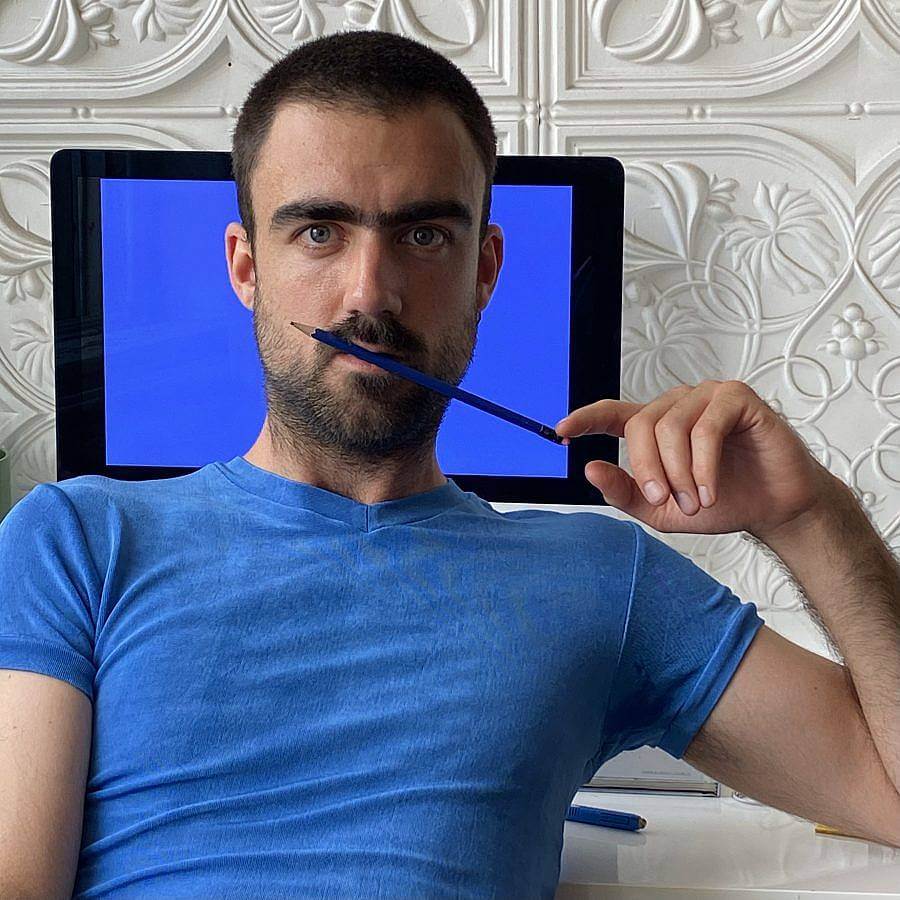Tell us a bit about yourself and what you do
I’m Bronson Smillie, an artist living and working in Montreal. I grew up out west in Calgary, in the prairies, and I’ve been living in Montreal for the last 8 years. I work with drawing and sculptural forms of drawing.
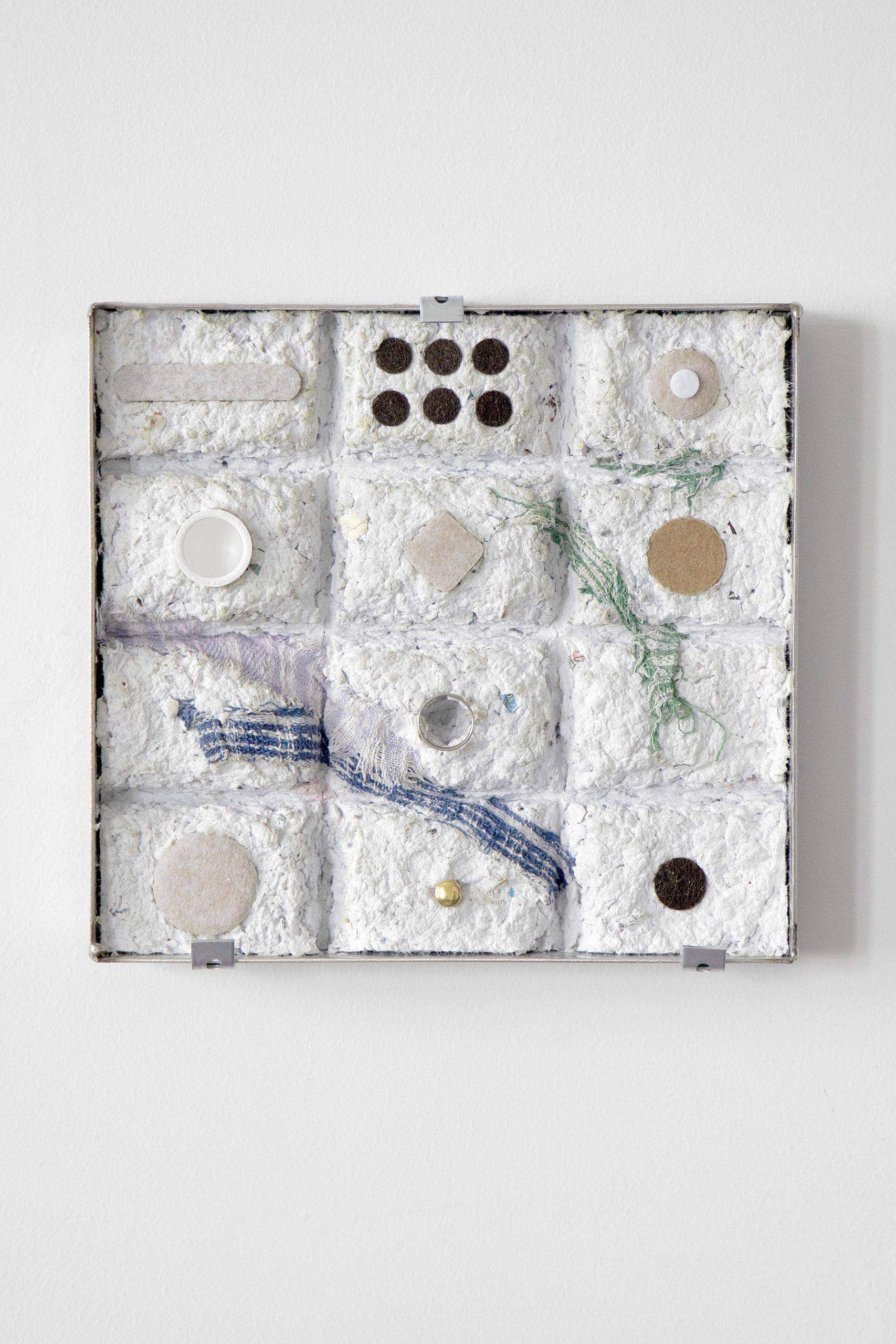
Could you talk about your relationship with the grid and how it functions in your work?
For me the grid is something that I’ve always sought out in my support materials. I think I’m drawn to it because of the comfort it brings me when structuring a new work and the ability it gives me to get straight into things without suffering the “blank canvas” syndrome. When I first started out making art, I was sure I wanted to be a graphic novelist, so I spent my formative years looking at images that were mediated by the grid. I love it as both a narrative device and a compositional framework.
That is why I’m so attached to the form now, it’s something I can always come back to when I want to indulge in something cathartic and familiar. A lot of the time in the studio I am pulling my hair out, so it’s become important to me to have this indulgence.
What is the artist community in Montreal like, and what was your path to living there?
Montreal has a pretty activated community. For a smaller city, there are many artists that have prolific practices here, so it feels attainable to carve out your own space without feeling like you have to make a certain type of work. I moved here in 2014 with no real plans to get involved as an artist, I just felt it was time to move away from Calgary. I had dropped out of an environmental science degree and wanted a fresh slate. Also, I speak French so that factored in as well.
After a few years of twiddling my thumbs and partying too much I had made some solid connections with artists who were working towards careers and I started to imagine that for myself. I began a BFA in Painting and Drawing at Concordia University in 2016 and since then I’ve felt pretty tethered to the city.
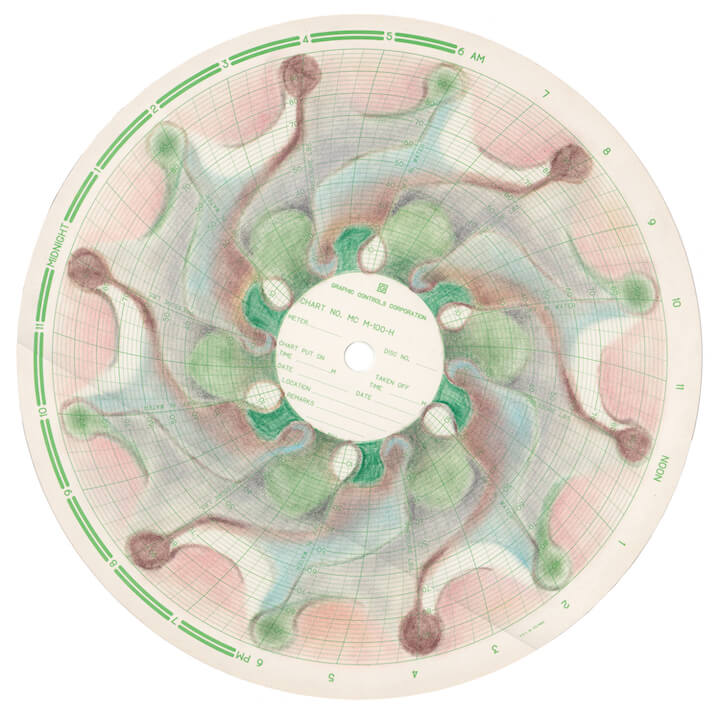
paper. 2022
How does color function for you?
I think about color in terms of saturation and balance. It’s like the gas that fills the tank, and I never want to put too much in or too little. There’s no particular color that I shy away from, but there are levels of color saturation that I avoid. I’m always trying to strike an interesting balance.
In my recording chart drawings I think you can really read this push and pull in the image. I want the color and mark making to coalesce with the printed grid of the graph itself, and to achieve this requires a certain awareness of what the color is doing. If the image gets oversaturated, and I can’t find a way to fix it (either by diluting or removing elements), I’ll often scrap the piece and start over.
I feel that there is a conversation between ‘soft’ and ‘hard’ in your work, especially in your drawings – could you speak to that?
When I started out developing a visual signature, a lot of the mark making was extremely tentative or light, which led me to seek out support materials that were equally delicate. Some of the paper supports I work with don’t exist in multiple, so my initial approach was to treat them with extreme reverence. The work began to feel limited by this treatment so I became interested in trying out new combinations of materials.
I started by using mending plates to puncture through some of these super delicate papers, and found that this action gave the drawing the permanency it was missing when I was being too fussy. The act of inflicting violence on the material actually absolved me of my responsibility to be overly precious! Now I get a lot of satisfaction in intentionally seeking balance between these oppositional forces.
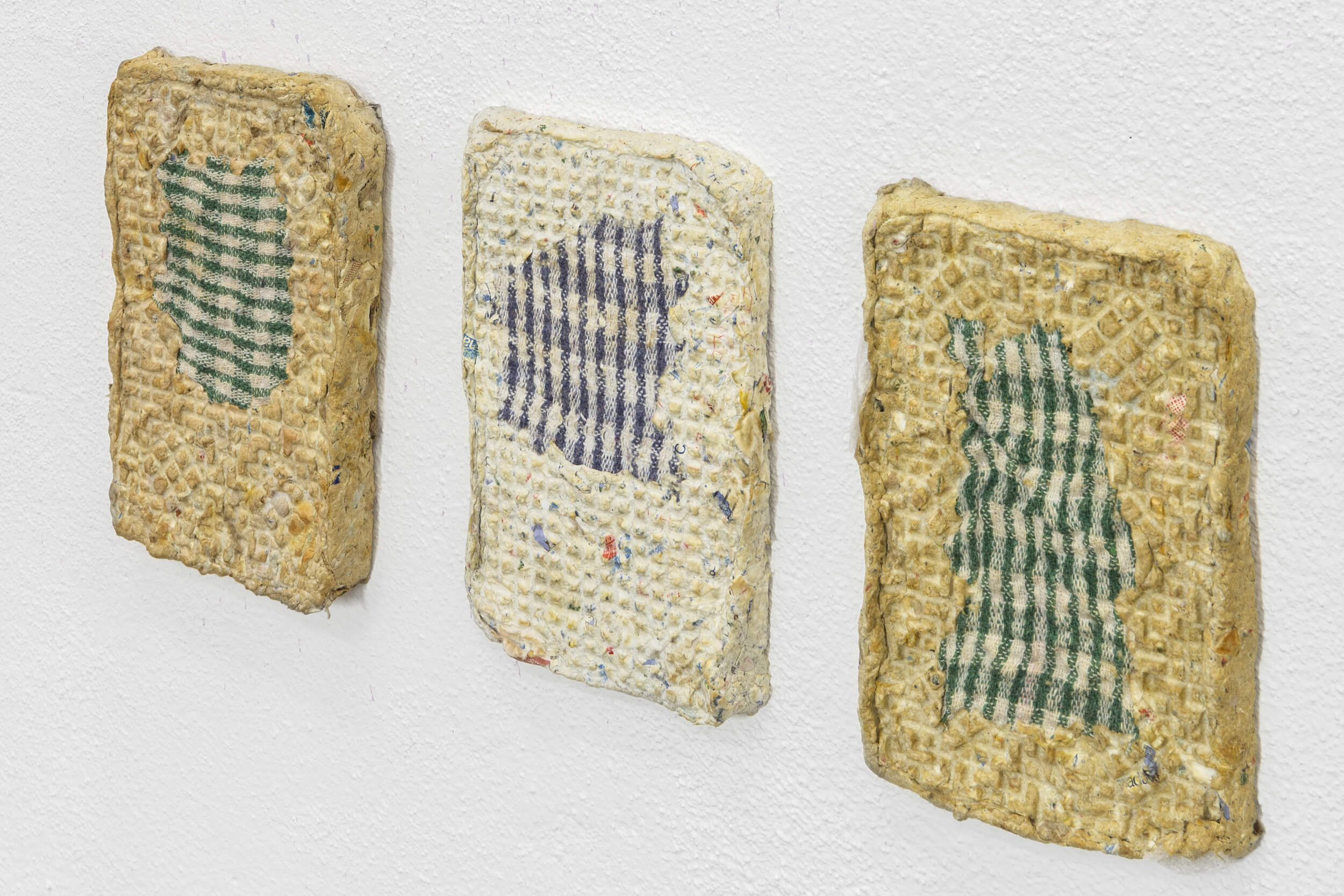
What does your studio look like?
Right now, a lot of piles on the floor. I worked from a home studio for many years, and when you share a living space with your practice, you really have to be disciplined about cleaning up after sessions. Now that I have a “real” studio outside of my home, I’ve been allowing myself more mess and chaos. I’ve pushed my desk into a corner and have been working mostly on the ground because it allows me to move between ideas with expediency. Doesn’t really look pretty in photographs though.
You recently showed work with april april at NADA New York – How do you feel about Art Fairs and how was your experience?
That was a really great experience. It’s interesting because I am familiar with the fair format, but as a zine maker and self publisher. At Zine Fairs you are always sitting at your table with your work and interfacing directly with the public and something about it feels extremely vulnerable. It’s like an energetic experiment. Lots of highs and lows.
At Art Fairs, the gallerist becomes the mediator and they really take care to represent your practice on your behalf. It takes a bit of the pressure off. It was the first Art Fair for both myself as an artist and april april as a space, so it was special to get to share this experience together.
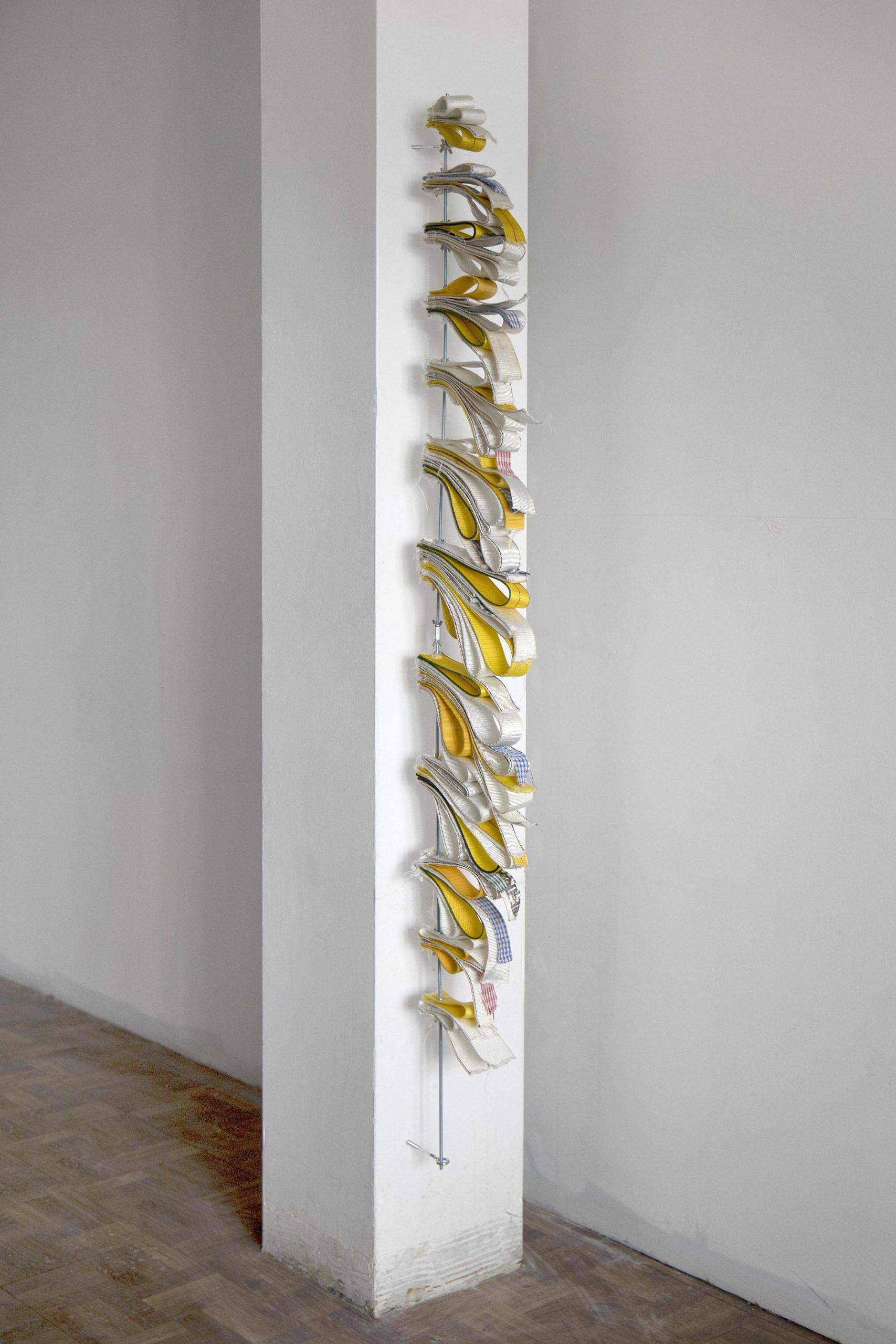
What are the limits, or at least the limits in your practice, of drawing? I.e. What can it not do that, say, your more sculptural work does better?
Drawing has been the anchor of my practice for so long that I find it hard to consider that some of the work I’m doing now is sculpture, although obviously I know it is. I do like to think of the more sculptural works as drawings. A lot of the support materials I choose (like the VHS storage units in the Debris Flows) allow me to work the surface as if it were a piece of paper. The grid comes back a lot in the support material as well. I compose the image as if it were a drawing, and there is still this element of two dimensionality to the work that keeps it familiar to me. I find drawing to be the most expansive medium, so I don’t find a lot of limits there.
From a purely technical and practical standpoint, one thing that I find limiting with more conventional drawing is its sedentary nature. I have a hard time sitting still, so I enjoy that making sculptures implicates my body and forces you to move between the different processes that make up the finished work.
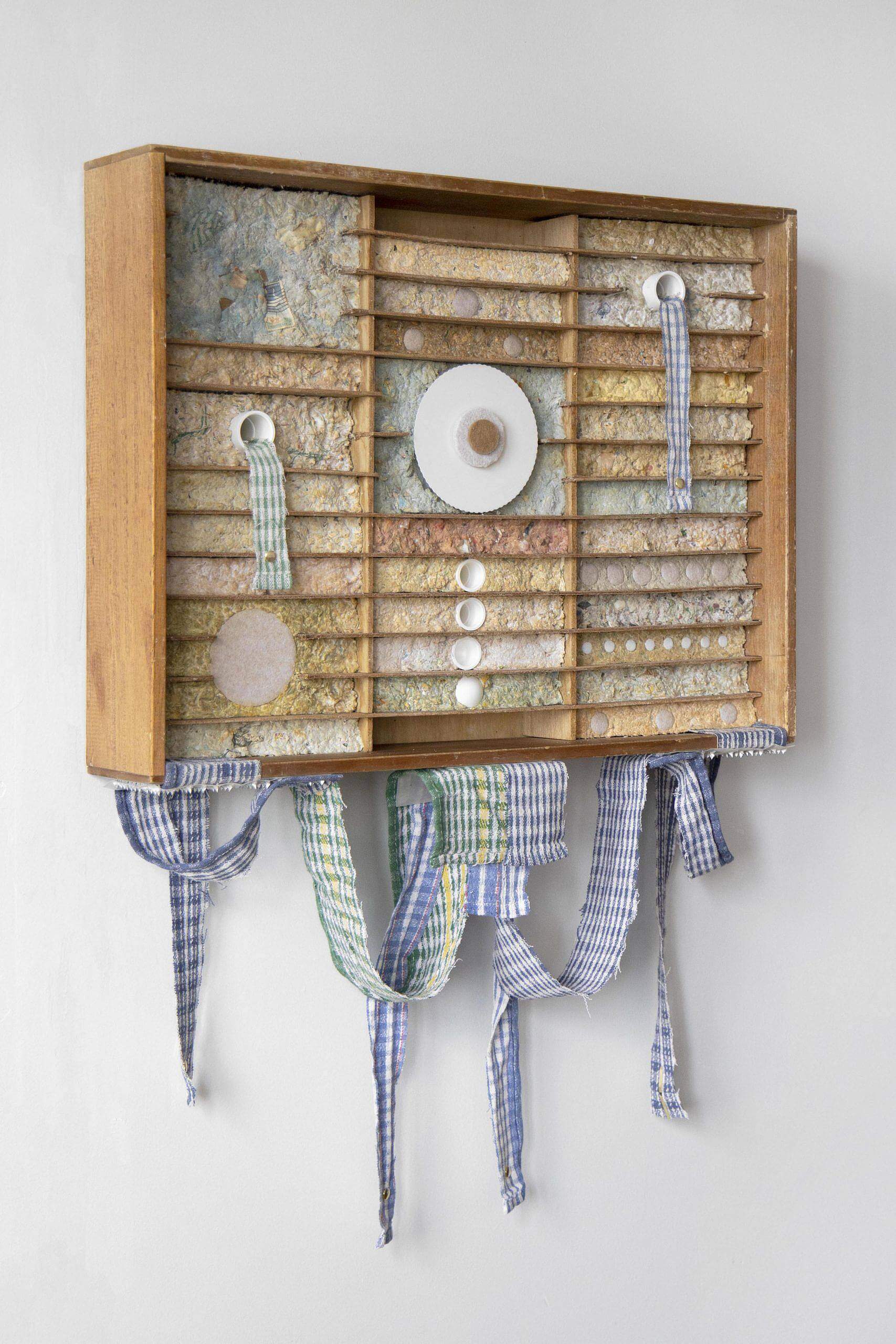
(At the time of writing) you have an upcoming show at Maurice in Montreal, which opens August 27th, which judging by the flier relates to player pianos and their rolls – could you talk about how you are using these objects and what we might expect to see from the show?
When I was asked to do a show at Maurice, I had just acquired a small collection of piano rolls from an auction. In terms of paper objects, piano rolls are some of the most fascinating to me. The way the perforations act as an integrated design element in the paper itself, and how the lyrical text runs the length of the roll, but when read top to bottom, makes no sense at all. There are just a lot of really captivating components.
Once the idea of working with the rolls was cemented, I found another more complete collection of around 50 rolls. It was from this collector who had been sitting on them in the hopes of one day finding a player piano. He seemed a bit sad handing them over. He had made all of these annotations and qualifications in pencil on the boxes of the rolls, and I wanted to somehow reanimate the collection to showcase all the care he had taken with these objects for so many years. I made a sculptural piece called Keys, which takes the tops and bottoms of the boxes and recreates the key pattern of a piano.
There are some drawings in the show as well. I did rubbings of the negative space created by the perforations in the rolls, and created some compositions that way. I used extracted piano keys to make a little ledge for the drawings to sit on.
There are other works that I won’t describe in detail, but the concept behind the show really owes itself to the obsession I developed with the piano roll, and the material culture that surrounds it.
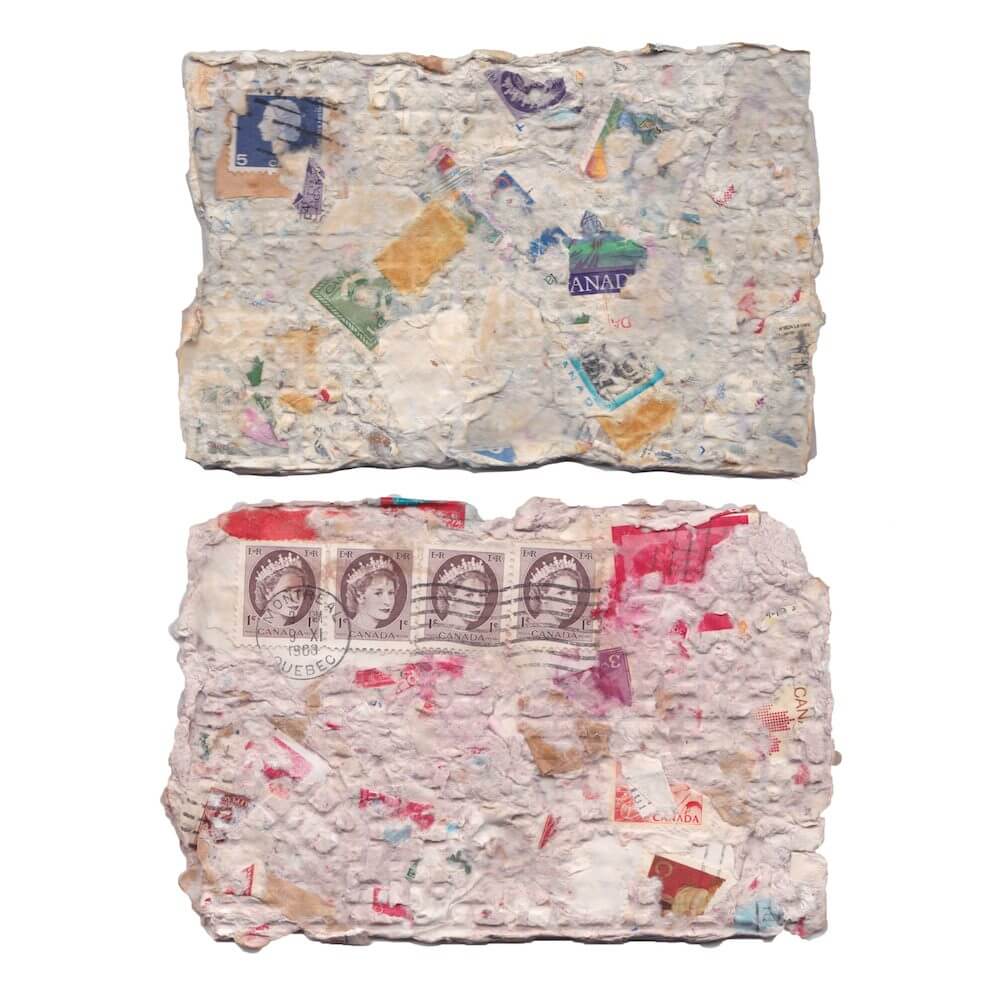
What do you collect?
My favorite thing to collect is other people’s collections. I love to study the physical traces left on objects as they move from desirable to collectible and then from collectible to disposable. Right now I have a large collection of other peoples postage stamps, and a while back my Aunt gifted me her entire collection of rubber stamps for scrapbooking. I now have this giant mass of piano rolls too that I imagine I’ll keep using in future projects.
I’m always collecting paper as well. Scrap paper to make pulp with, and anything that can make an interesting drawing support. Office stationery, road maps, golf course score cards, address books, recording charts. There’s a lot of paper out there just yellowing on shelves.
Do you have any other upcoming projects that you can share with us?
I’m going to be showing work in a group show at AXENÉO7 in November, and in 2023 I’ll be showing again with april april, but this time at their gallery. A few other things in the pipeline for next year that I can’t mention at the moment 😀
Interview Conducted by Milo Christie
